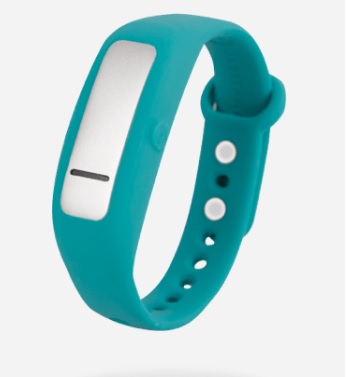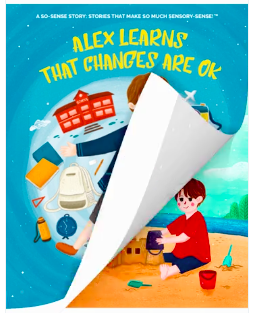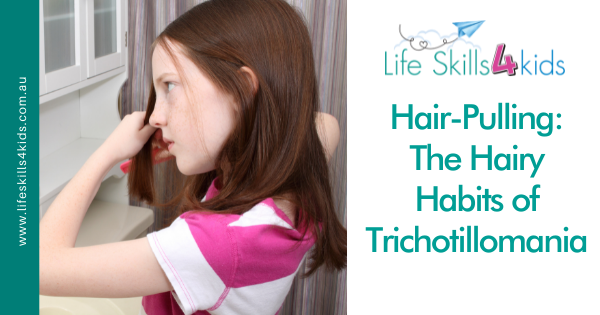Hair-Pulling is Actually Quite Common
These days, our understanding of the habit of hair-pulling is changing. A few years ago, it was classified as being on the Obsessive-Compulsive Disorder spectrum, but these days, it is more likely to be regarded as a body-focused repetitive behaviour (BFRB). Regardless of the classification, sufferers can be adults or children and they are usually secretive about their compulsion to pull out their own hair. This has lead to the belief that the disorder is rare when in actual fact, it affects up to 2% of the population (1).
Symptoms of Trichotillomania
How can you tell if your child or someone you know has trichotillomania and not simply a mild, nervous habit? The symptoms of this hair-pulling disorder include:
- An irresistible urge to pull out hair
- Hair-pulling can happen during times of stress or when relaxed
- Feelings of stress, tension or anxiety that are relieved by hair-pulling
- Touching or playing with the hair after pulling it out
- Eating, biting, or chewing on the roots of the hair or all of the hair
- An inability to stop hair-pulling
- A preference for hairs that have a specific feel or come from a specific location
- Patterns of hair-pulling or rituals that accompany the act of hair-pulling
- Bald areas on the head, eyebrows, eyelashes, genital area or body
- Social isolation or social or emotional distress caused by the habit of hair-pulling
Trichotillomania Often has Friends
Trichotillomania often goes with anxiety, depression, OCD or other mental health disorders. It most commonly occurs in women and frequently begins during the pre-teen and early adolescent years (ages 10-13). Without treatment, it is likely to be a lifelong problem that varies in severity. Severe stress can be a trigger for some people.
Treatment for Hair-Pulling
Trichotillomania research reveals that some cognitive therapies provide the most effective treatment for the condition, especially one known as habit reversal training. A professional diagnosis will help you to find the right approach for treatment.
You can also try the following strategies at home:
- Replace the urge with a different activity, such as going for a walk, deep breathing, or squeezing a stress ball.
- Keep your hair short
- If you have a child with a hair-pulling problem, maintain very short hair
- Put plaster or tape on your fingers
- Hide any implements you use for hair-pulling, such as tweezers
- Put gloves on a child’s hands rather than plaster or tape
- Remind your child to stop and provide a distracting activity
Other Help for Trichotillomania
Although I am quite particular about recommending products, I have come across one that I believe is highly beneficial to sufferers of trichotillomania and other body-focused repetitive behaviours. This product is specifically designed to interrupt these behaviours and helps to reverse the unconscious habit of hair-pulling. Children and adults alike can benefit from using it and retraining their brains to find other activities when the hair-pulling urge strikes. You can find out more here.
Anxiety and Trichotillomania
Trichotillomania is often closely linked with anxiety. When anxiety starts to build up and tension increases, it has to be released somehow. In the case of trichotillomania, the act of hair-pulling brings relief from the feelings of tension and stress. Anxiety also impacts an individual’s ability to control impulse urges. As anxiety levels rise, the brain is so busy dealing with the feelings of anxiety that it is unable to control the hair-pulling impulse. If you would like more information about strategies that can help with anxiety, check out my new book, Teaching Kids to Manage Anxiety: Superstar Practical Strategies. (Hint: they work for adults, too!).
Trichotillomania Doesn’t Have to Rule Your Life
If you or your child suffers from trichotillomania, it doesn’t have to rule your life. You don’t need to fear embarrassment or social distress because of this condition. It is treatable and you can get help. If you would like to know more, feel free to contact us. We would love to hear from you!
References:
(1) https://www.psychologytoday.com/us/blog/mastering-hair-pulling/201706/why-do-some-people-pull-their-hair-when-anxious
Check this interesting item here – Welcome to RYIFY:

You might also want to wear this innovative cool wrist band, high quality wearable healthcare product made in Australia.
ALEX LEARNS FLIPBOOK
Alex loves school. He enjoys all the activities he does during the term such as swimming and soccer. He also loves holidays and all the fun things he gets to do while he’s not at school. The problem is, Alex doesn’t like changes. His tummy gets all tight and he gets a worry cloud that comes over his brain and makes it feel foggy. When the school term ends and holidays begin or when school is about to start again, Alex feels really worried and anxious.
When you purchase the Alex Learns that Changes are OK (Flipbook), you will receive a digital flipbook that gradually changes from one page to the next while listening to high-quality audio narration as if someone is flipping and reading the book for you!


